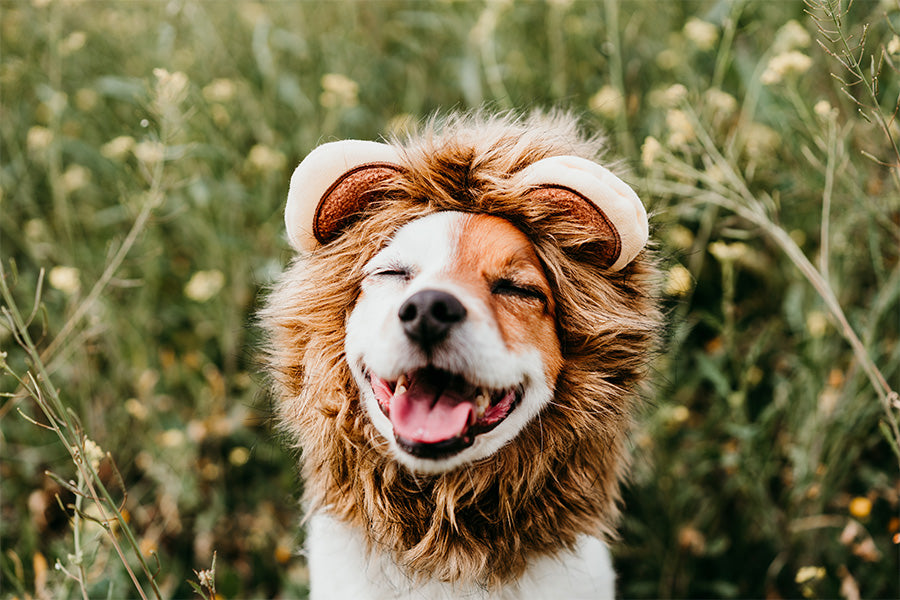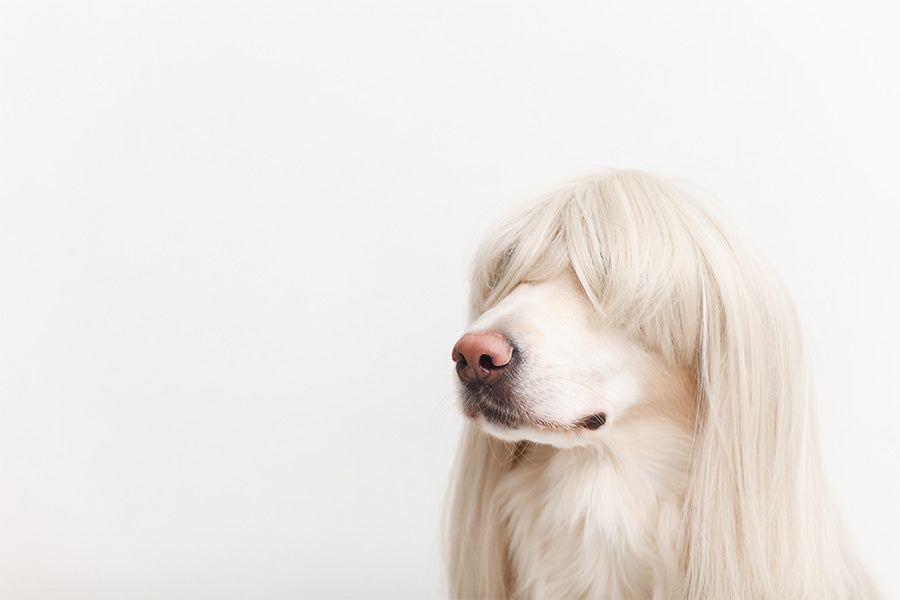How Positive Reinforcement Speeds Up Puppy Potty Training

Positive reinforcement is a method of training that focuses on rewarding desired behaviours, rather than punishing unwanted ones.
When your pet does something right, like going to the toilet in the designated area, you reward them with treats, praise, or playtime. This encourages them to repeat the behaviour because they associate it with positive outcomes. The reinforcement of positive actions rather than focusing on mistakes creates a learning environment where your pet feels safe to explore and understand what is expected of them.
In addition to being an effective training strategy, positive reinforcement helps to build a strong foundation of trust between you and your pet. When your pet receives rewards for specific behaviours, they begin to associate you with positive experiences.
This approach not only makes training more enjoyable for your pet but also strengthens your relationship, as they learn to see you as a source of guidance and support rather than punishment.
Positive reinforcement potty training is not only effective but also humane and fosters a loving relationship between you and your pet. It helps your pet feel safe and confident, reducing anxiety and stress that can come with traditional training methods. This technique takes into account the emotional well-being of your pet, leading to a more comfortable and enjoyable learning process for both parties.
Moreover, pets trained with positive reinforcement methods tend to learn faster and retain their training longer. This is because they are motivated by the rewards and enjoy the process of learning. As a bonus, this method strengthens the bond between you and your pet, making training a positive experience for both of you.
The mutual joy and satisfaction derived from successful training moments can enhance your daily interactions and contribute to a harmonious household.
Before you begin toilet training, it's important to have a plan in place. Proper preparation can make the process smoother and less stressful for both you and your pet. Here are some steps to get you started:
Designate a specific area for your pet to use as their toilet spot. Whether it's a corner of the garden or a puppy pad inside the house, consistency is key. Make sure the area is easily accessible and free from distractions. A familiar and consistent toilet location helps your pet understand where they are expected to relieve themselves, reducing confusion and accidents.
Consider the surface where your pet will be going to the toilet. Some pets prefer grass, while others might adapt better to a specific type of pad.
By observing your pet's preferences and adjusting the environment accordingly, you can make the toilet area more appealing, encouraging your pet to use it regularly.
Pets thrive on routine, so establish a consistent schedule for toilet breaks. Take your pet to their toilet area first thing in the morning, after meals, and before bedtime. Additionally, watch for signs that your pet needs to go, such as sniffing around or circling, and take them to their toilet spot immediately. A regular schedule helps your pet develop a natural rhythm for bathroom breaks, minimising the chances of accidents.
Adjust your routine as needed to accommodate your pet's specific needs and lifestyle. Some pets might require more frequent breaks, especially when they are young or new to the training process. Being attentive to your pet's signals and adapting your schedule can enhance the effectiveness of the training.
Select rewards that your pet loves and will work for. Treats are a popular choice, but some pets might prefer a favourite toy or extra belly rubs. Whatever you choose, make sure the reward is immediate and directly follows the desired behaviour. Immediate rewards help your pet make the connection between their actions and the positive outcome, reinforcing the behaviour effectively.
Experiment with different rewards to see what motivates your pet the most. Some pets might respond better to verbal praise and affection, while others might be more driven by food rewards. By identifying what excites your pet, you can tailor your reinforcement strategy to maximise its impact.
Implementing positive reinforcement successfully takes some patience and consistency. Here are some tips to help you along the way:
Toilet training doesn't happen overnight. Here are some potty training tips:
Be patient and stay consistent with your training. If your pet has an accident, don't get discouraged. Clean it up without fuss and continue with your training plan. Maintaining a calm and positive demeanour helps your pet feel secure and unafraid to make mistakes.
Consistency is crucial in reinforcing the desired behaviour. Regularly rewarding your pet for their successes and maintaining a routine will gradually build their understanding of what is expected, leading to reliable toilet habits over time.
Introduce a cue word or phrase, like "go toilet" or "do your business," every time you take your pet to their designated toilet area. Eventually, they will associate the cue with the action, making communication easier. Cue words act as verbal signals that help your pet understand when and where they should go to the toilet, streamlining the training process.
Consistency in using the cue word is key to its effectiveness.
Use the phrase in a calm and encouraging tone each time you direct your pet to their toilet area, and soon they will respond to the cue with the appropriate action.
Whenever your pet uses the toilet area correctly, celebrate their success with lots of praise and their chosen reward. Make it a big deal so they understand they've done something good. Positive attention and enthusiasm from you reinforce the behaviour, making your pet eager to repeat it.
Celebrating successes creates a joyful training environment that your pet looks forward to. Over time, these positive interactions will strengthen your pet's confidence and willingness to cooperate with the training process.

If your pet has an accident, avoid scolding or punishing them. This can create fear and confusion, which can hinder progress. Instead, focus on reinforcing the correct behaviour. Punishment can lead to anxiety and distrust, making your pet less receptive to learning.
Redirect your pet's attention to the desired behaviour by gently guiding them to the correct potty area and rewarding them when they succeed. This approach reinforces positive actions and helps your pet learn from mistakes without fear of negative consequences.
Even with the best intentions, potty training can come with its challenges. Here are some common issues and how to address them:
Sometimes, a pet might regress and start having accidents after a period of successful potty training. This can happen due to changes in routine, stress, or health issues. If you notice regression, revisit the basics of potty training and make sure your pet is healthy. Regression can also occur during developmental stages, so patience and understanding are crucial.
Addressing any underlying issues, such as changes in environment or household dynamics, can help you identify the cause of regression.
Re-establishing a consistent routine and providing additional support during challenging times can help your pet get back on track.
If your pet suddenly starts having frequent accidents, it might be due to a health problem. Consult your vet to rule out any medical issues that could be affecting your pet's ability to control their bladder or bowels. Conditions like urinary tract infections or digestive problems can impact your pet's toilet habits.
Regular vet check-ups and open communication with your vet can help you catch and address health issues early, ensuring your pet's wellbeing and the success of your training efforts.
Some pets are more stubborn than others and may take longer to train. Stay patient and keep up with the positive reinforcement. Consistency is key, and eventually, your pet will catch on. Understanding your pet's unique personality can help you adapt your training methods to suit their needs.
Stubbornness may also stem from a lack of motivation or interest in the rewards offered. Consider varying your reinforcement strategies and experimenting with different rewards to find what truly engages your pet.
As a pet owner, it's important to consider the ethical implications of how we train and care for our pets. Positive reinforcement aligns with ethical training practices by promoting a nurturing, supportive environment that respects your pet's well-being. By focusing on positive outcomes rather than punishment, you create a training environment that is both effective and compassionate.
By choosing positive reinforcement, you're not only speeding up the toilet training process but also contributing to a positive impact on your pet's overall quality of life. This method fosters trust, reduces anxiety, and encourages a healthy, happy relationship between you and your furry friend.
Ethical training prioritizes your pet's emotional health, leading to a more fulfilling and rewarding companionship.
Positive reinforcement is a powerful tool in toilet training your pet. By focusing on rewarding good behaviour, you create a positive learning environment that speeds up the training process and strengthens your bond with your pet. Remember to be patient, consistent, and celebrate every success along the way. With these tips, you and your pet will be well on your way to achieving toilet training success.
Embrace the journey and enjoy the rewarding experience of teaching your pet new skills while building a strong, loving relationship. Happy training! By investing time and effort into positive reinforcement, you set the stage for a lifetime of mutual respect and understanding with your pet.
For more helpful insights and information, check out our related blog posts here:
7-Day Plan to Potty Train Your Puppy
Potty Training Small Dogs: Mistakes to Avoid
Effective Strategies for House Training Adult Dogs



